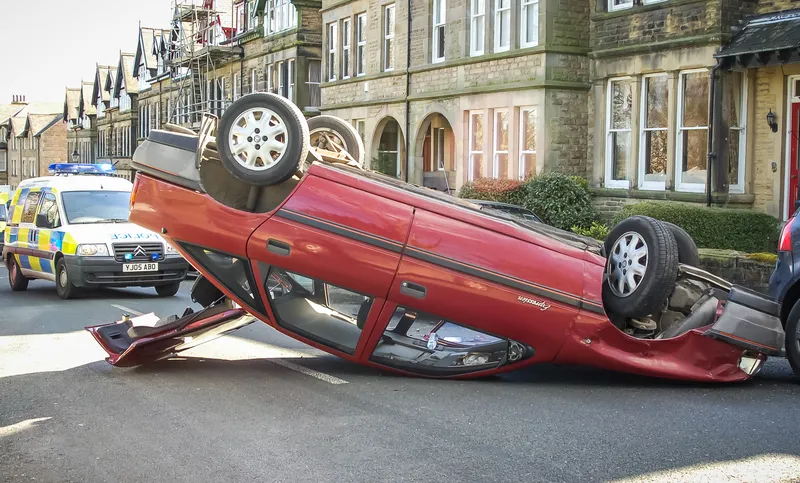A recent study by the University of Minnesota found strong support for automated speed enforcement, particularly in work zones and school zones and if revenues from fines are dedicated for road safety programs. Presenting the findings, Frank Douma, associate director of the State and Local Policy Program in the Humphrey School of Public Affairs said automated speed enforcement has been deployed in fourteen states and in many countries, especially in Europe. Automated speed enforcement is proven to be an ef
December 14, 2012
Read time: 3 mins
A recent study by the 584 University of Minnesota found strong support for automated speed enforcement, particularly in work zones and school zones and if revenues from fines are dedicated for road safety programs.
Presenting the findings, Frank Douma, associate director of the State and Local Policy Program in the Humphrey School of Public Affairs said automated speed enforcement has been deployed in fourteen states and in many countries, especially in Europe.
Automated speed enforcement is proven to be an effective strategy for reducing speeding and improving road safety. Its use in the United States, however, has been limited in part because of a perception by policymakers that it is unpopular and controversial.
Automated speed enforcement uses radar and cameras to identify a speeding vehicle and capture images of the licence plates, and, in some systems, the driver. Citations are then mailed to the vehicle’s registered owner or, alternatively, the identified driver.
In a survey of more than 600 Minnesotans earlier this year, the University of Minnesota team found that a majority (56 percent) either are very supportive (20 percent) or somewhat supportive (36 percent) of the concept of automated speed enforcement, which is in line with national surveys. Support is even higher for using automated speed enforcement in specific, limited locations, such as construction zones where workers are endangered (83 percent net support), on roads near schools (82 percent net support), on roads where many have died (77 percent net support), and on roads where many people violate speed limits (69 percent net support). However, support for using automated speed enforcement on all Minnesota roads falls just below the majority threshold, at 48 percent net support.
In addition, about seven in ten Minnesotans indicated they would be more likely to support automated speed enforcement if the money raised from speeding tickets were used for local road safety improvements or if tickets were issued only to those driving at extreme speeds, Douma said.
The researchers also examined the legal and related political obstacles for deploying ASE in Minnesota, including a state supreme court ruling that invalidated a Minneapolis red-light photo enforcement ordinance. The court’s ruling was narrow, Douma explained, and did not bar automated enforcement generally or the concept of owner liability.
Moving forward, Douma said deploying automated speed enforcement in Minnesota would require authorising legislation, particularly to clarify liability issues and the role of local authorities. The researchers recommend that if legislation were drafted to authorise pilot testing of automated speed enforcement, it should focus on school zones and MnDOT work zones.
State Senator Kathy Sheran said the research findings and recommendations provide the groundwork for shaping potential legislation. “We’re beginning to work on the design of legislation in order to do what we need to do to authorise a pilot,” she said. “We’re exploring, and we’re learning from other states.”
Presenting the findings, Frank Douma, associate director of the State and Local Policy Program in the Humphrey School of Public Affairs said automated speed enforcement has been deployed in fourteen states and in many countries, especially in Europe.
Automated speed enforcement is proven to be an effective strategy for reducing speeding and improving road safety. Its use in the United States, however, has been limited in part because of a perception by policymakers that it is unpopular and controversial.
Automated speed enforcement uses radar and cameras to identify a speeding vehicle and capture images of the licence plates, and, in some systems, the driver. Citations are then mailed to the vehicle’s registered owner or, alternatively, the identified driver.
In a survey of more than 600 Minnesotans earlier this year, the University of Minnesota team found that a majority (56 percent) either are very supportive (20 percent) or somewhat supportive (36 percent) of the concept of automated speed enforcement, which is in line with national surveys. Support is even higher for using automated speed enforcement in specific, limited locations, such as construction zones where workers are endangered (83 percent net support), on roads near schools (82 percent net support), on roads where many have died (77 percent net support), and on roads where many people violate speed limits (69 percent net support). However, support for using automated speed enforcement on all Minnesota roads falls just below the majority threshold, at 48 percent net support.
In addition, about seven in ten Minnesotans indicated they would be more likely to support automated speed enforcement if the money raised from speeding tickets were used for local road safety improvements or if tickets were issued only to those driving at extreme speeds, Douma said.
The researchers also examined the legal and related political obstacles for deploying ASE in Minnesota, including a state supreme court ruling that invalidated a Minneapolis red-light photo enforcement ordinance. The court’s ruling was narrow, Douma explained, and did not bar automated enforcement generally or the concept of owner liability.
Moving forward, Douma said deploying automated speed enforcement in Minnesota would require authorising legislation, particularly to clarify liability issues and the role of local authorities. The researchers recommend that if legislation were drafted to authorise pilot testing of automated speed enforcement, it should focus on school zones and MnDOT work zones.
State Senator Kathy Sheran said the research findings and recommendations provide the groundwork for shaping potential legislation. “We’re beginning to work on the design of legislation in order to do what we need to do to authorise a pilot,” she said. “We’re exploring, and we’re learning from other states.”









